Yummy’s Favorite Fermented Seasonings: Global Flavors for You
Feb 16,2023
Yummy’s Favorite Fermented Seasonings: Global Flavors for You
Feb 16,2023


In this new series, food professionals talk about their favorite fermented foods to recommend.
For this first installment, culinary expert Yummy introduces delicious flavors from various parts of the world in three easy steps. In going through Yummy’s essential everyday seasonings, we discovered many of them are fermented.
Our interview about fermented seasonings led into conversation about how Yummy became a culinary expert. In addition, she gives us her go-to gourmet recipe that is easy and incredibly delicious.
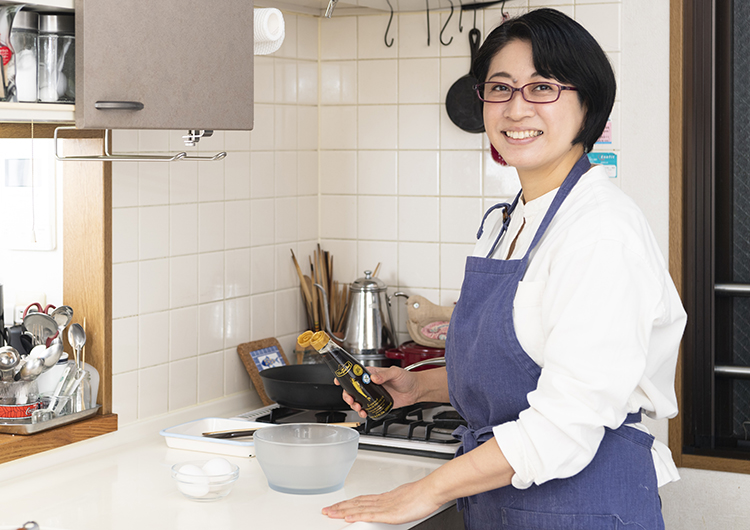
Just swapping fish sauce for soy sauce will instantly give your meals a Southeast Asian touch. “At home, I often add fish sauce to dishes like omelets, rice and vegetable porridges, and clear soups.”
Yummy’s kitchen is jam-packed with seasonings from countries all over the world.
“I can’t fit all my seasonings in the kitchen, so they’ve spread out here and there all over the house. One of my favorite things is comparing the different flavors between brands. For example, I must have four or five bottles of balsamic vinegar alone. (laughs)”
Yummy explains that her near-obsessive collection of seasonings is weighted heavily toward fermented seasonings from Asia.
“European cuisine often relies on salt to bring out flavors, whereas Asian cuisine more often uses fermented seasonings. Soy sauce, miso, and vinegar are all fermented seasonings. In Japan, you have soy sauce made from soybeans, in Southeast Asia, you have fish sauce made by fermenting pickled fish, and there are so many types of shrimp pastes made from shrimp. I think the widespread use of fermented umami flavors is a distinctive trait of Asian cuisine. That’s why I feel I can substitute fish sauce in pretty much any cuisine from any country when cooking Asian dishes.”

Fish sauce, for example, is called nam pla in Thailand; in Vietnam, it’s nước mắm; and in Japan, it’s shottsuru. The name, the seafood used, the fermentation duration, and the salt content all differ between regions, but the foundation — sauce made by fermenting seafood — is the same.
“Each fish sauce has its own personality, but if you examine the key elements of each, you find an equals sign connects them all. After discovering this, I came up with recipes I wanted to share. My thinking was ‘I can substitute this seasoning that’s easy to get in Japan for that dish’. When I dine out while on a trip, what I focus on is, predictably, the seasonings.”
If you focus on seasonings while sampling regional dishes, surprising discoveries will come your way.
“I used to think fish sauce was strictly an Asian seasoning, but then I learned that Italy has a fish sauce called colatura di alici. Going even further back to Roman times, people apparently used a fish sauce called garum. Natto [fermented soybeans] is thought by many to be exclusive to Japan, but in fact it is also produced in northern Thailand. In Indonesia, they have tempeh, which is like natto but in solid form. And in Africa, there is a fermented food dubbed the African natto. It’s called netetou in Senegal and is used as an umami seasoning much like miso or dashi stock.
“When you look at the world’s cuisines like this through the lens of seasonings, you can’t help but realize that people have been traveling back and forth and mingling cultures since ancient times. You get a sense that the world is connected through seasonings.”
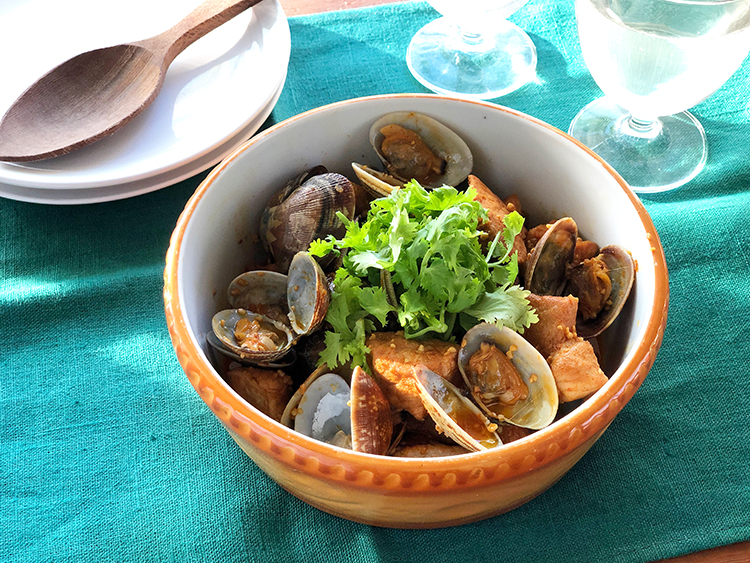
Alentejana, made with pork and clams, is a delicacy in the Alentejo Region of Portugal
“Portugal has a seasoning called massa made by fermenting pickled red paprika and turning it into a paste. Japan, China, and other countries have seasonings with fermented chili peppers, but fermenting paprika is something unique to this area. I love alentejana, a local dish that is made by marinating pork in massa and then stir-frying it with clams. The triple combo of pork, clams, and massa is simply amazing.”
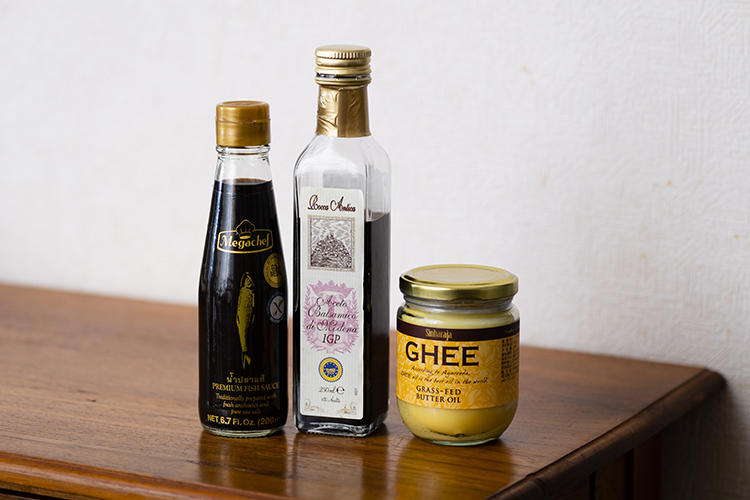
Yummy is a huge fan of the Megachef brand of fish sauce
When asked “if you had to pick just three of the many fermented seasonings loved around the world, which would you choose?”, Yummy recommended a fish sauce, balsamic vinegar, and ghee. We then asked her to explain her selections.
“With the fish sauce, more than anything, it’s just easy to use. You can get it anywhere and it’s reasonably priced. Simply replacing soy sauce with fish sauce lends a different accent to your everyday meals. Because fish sauce has a higher salt content than Japanese soy sauce, it’s best to use about half of the amount of soy sauce you would normally use in your recipes. When heated, the fish sauce’s aroma becomes milder and its umami enhanced. If you use fish sauce in a soup, it’s delicious enough on its own that you don’t need to make a broth.”
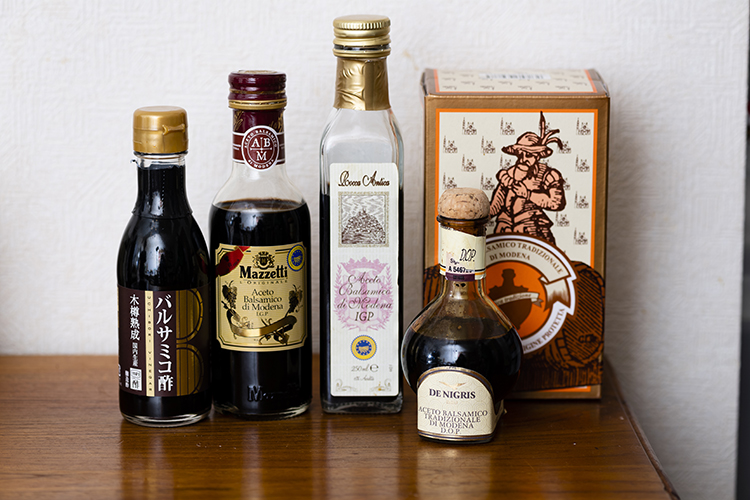
The taste, aroma, and price of balsamic vinegar vary tremendously depending on the manufacturer. There are even brands that cost more than ¥10,000 for 100 mL.
“Balsamic vinegar is a specialty of Modena in the Emilia-Romagna region of Italy. It has a distinctive dark caramel color, which is produced by fermenting concentrated grape juice. Traditional balsamic vinegar must be aged for over 12 years! The vinegar is now made in other regions and countries, but only balsamic vinegar produced in Modena or Reggio Emilia in the Emilia-Romagna region is recognized as having been made in the tradizionale way. In antiquity, it was an almost mythical condiment that only the House of Este, who ruled over the region, knew how to make.
“Compared to other vinegars, balsamic is sweeter and has stronger umami with less acidity. Putting a little on a salad is delicious in its own right. Drizzle some balsamic and olive oil directly on the vegetables, add a dash of salt and pepper, and you’re done. It’s great on cheese and fruits too, and I recommend you try drinking balsamic mixed with water or soda water.”
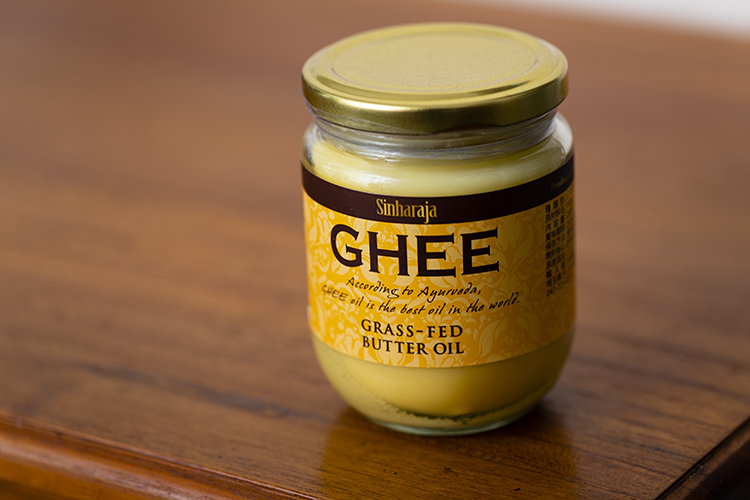
Butter oil, primarily produced in India, is made by fermenting and purifying fresh milk. There are unfermented varieties as well.
“The butter coffee that has become a trend among celebrities for its beauty and health benefits is simply ghee added to coffee. I love ghee on toast, and I have it nearly every morning. (laughs) When heated, ghee gives off the wonderful, indescribable aroma of fermented milk, so it’s important to spread it on your bread before toasting. Cookies and biscuits made with ghee are awesome too. You only have to use a little, compared to butter, and it still gives a nice milky aroma and bakes to a crispy texture.”
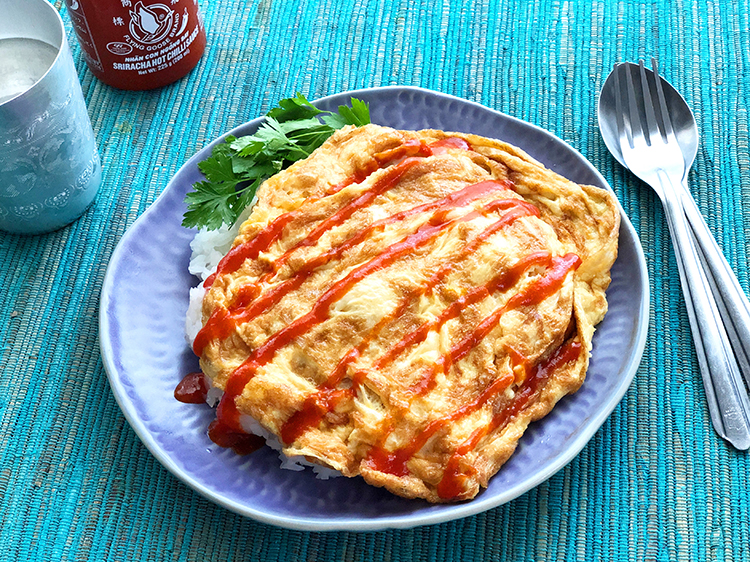
Khai jiao is a Thai-style omelet with rice that is noted for its juicy texture
Here is a quick and easy Thai dish featuring Yummy’s adored fish sauce that you’ll never tire of. It’s the perfect go-to lunch on a busy day that can be whipped up in five minutes.
*A chili sauce with a strong garlic flavor that originated in Thailand.
“The key point is to fry the sizzling eggs in plenty of oil. The umami of the fish sauce combined with the eggs alone makes for a complex, satisfying flavor. It is a great accompaniment to rice. Khai jiao is brilliant because all you need are eggs if you want another dish for a meal. In Thailand, khai jiao is often made with minced meat and vegetables.”
In this series’ next installment, we will speak with culinary expert Horie Sawako.
“Sawako and I are involved in the Noka no Daidoko [The Farmers’ Kitchen] project, which is a cooking team that prepares and sells delicious, non-standard vegetables that would otherwise be thrown away. I’m excited to see what fermented gourmet dishes she recommends.”

Culinary expert
Culinary expert
Yummy is a culinary expert who promotes food from around the world through recipes that are easy to make in Japan. In addition to developing recipes for TV programs, magazine articles, and companies, she is known for being Japan’s No. 1 fan of the Kaldi chain of imported food stores. She has written numerous books including Yummy’s Recipes to Tour the World from Your Home and One Bowl Cooking (both published by Shufu-no-tomo Publishing). She runs Yummy’s Cooking Studio (https://www.manabi-abc.com/p/15/), a cooking school with small class sizes that also offers online classes.
https://ameblo.jp/3stepcooking/